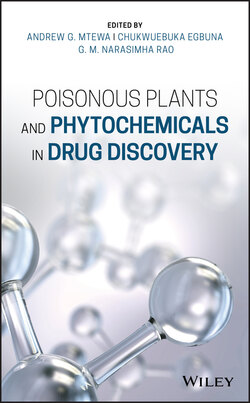Читать книгу Poisonous Plants and Phytochemicals in Drug Discovery - Группа авторов - Страница 23
1.7 Poisonous Plants as Biopesticides
ОглавлениеBotanical pesticides have a wide range of biological activities such as repellents, insecticides, fungicides, bactericides, molluscicides, nematicides, and rodenticides [21, 56]. Some of the plant species used as fishing poisons also have proven insecticidal properties include Derris sp. (containing rotenone) and Nicotiana sp. (containing nicotine) [57].
Rotenones are extremely toxic isoflavones from the roots or rhizomes of several tropical legumes. They act by suppressing the appetite of insects, leading to death within hours or a few days. There are more than 67 species of legumes that synthesize a broad spectrum of non‐systemic insecticides [58]. The roots of many species of Derris and Lonchocarpus (family Leguminosae) have insecticidal properties, which are mainly attributed to the presence of rotenone (3–10%), although other insecticidal compounds are usually present. Other genera with rotenoid‐producing species are Millettia, Neorautanenia, and Tephrosia [21]. Strychnine from Strychnos spp. has also been historically used as a pesticide [21]. Such compounds of botanical origin can be highly effective with low levels of toxicity toward non‐target organisms and multiple mechanisms of action [59, 60]. However, poor stability and other technological issues limit the large‐scale application of natural compounds for pest control [21, 61].
